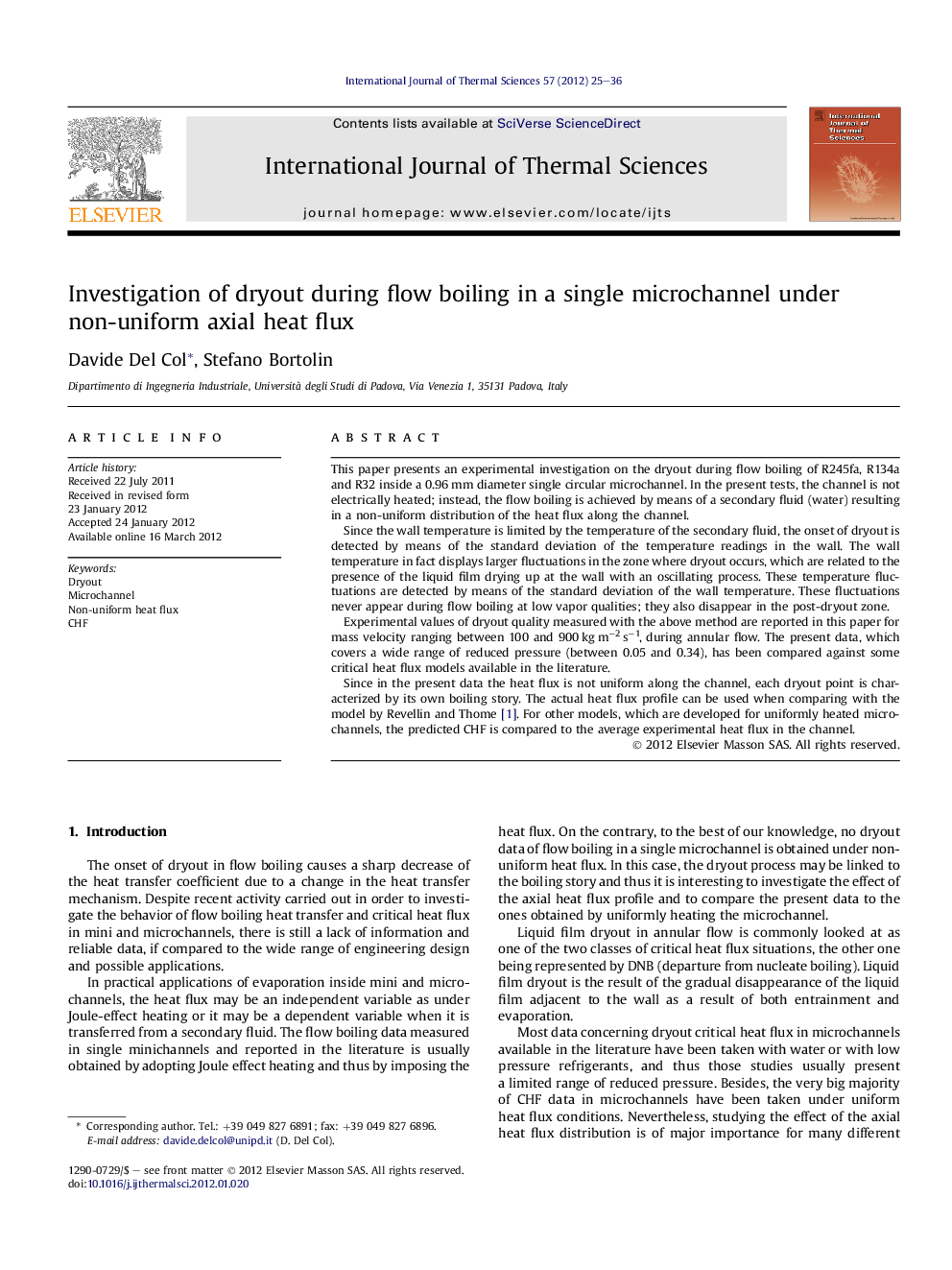| Article ID | Journal | Published Year | Pages | File Type |
|---|---|---|---|---|
| 668677 | International Journal of Thermal Sciences | 2012 | 12 Pages |
This paper presents an experimental investigation on the dryout during flow boiling of R245fa, R134a and R32 inside a 0.96 mm diameter single circular microchannel. In the present tests, the channel is not electrically heated; instead, the flow boiling is achieved by means of a secondary fluid (water) resulting in a non-uniform distribution of the heat flux along the channel.Since the wall temperature is limited by the temperature of the secondary fluid, the onset of dryout is detected by means of the standard deviation of the temperature readings in the wall. The wall temperature in fact displays larger fluctuations in the zone where dryout occurs, which are related to the presence of the liquid film drying up at the wall with an oscillating process. These temperature fluctuations are detected by means of the standard deviation of the wall temperature. These fluctuations never appear during flow boiling at low vapor qualities; they also disappear in the post-dryout zone.Experimental values of dryout quality measured with the above method are reported in this paper for mass velocity ranging between 100 and 900 kg m−2 s−1, during annular flow. The present data, which covers a wide range of reduced pressure (between 0.05 and 0.34), has been compared against some critical heat flux models available in the literature.Since in the present data the heat flux is not uniform along the channel, each dryout point is characterized by its own boiling story. The actual heat flux profile can be used when comparing with the model by Revellin and Thome [1]. For other models, which are developed for uniformly heated microchannels, the predicted CHF is compared to the average experimental heat flux in the channel.
► The liquid film dryout is investigated in a non-uniformly heated microchannel. ► The axial heat flux profile is the result of the test conditions, using water to promote the boiling of the refrigerant. ► Since the wall temperature is limited by the secondary fluid, an ad-hoc technique is applied to determine the dryout quality. ► Dryout data with three HFC refrigerants (R245fa, R134a and R32) are provided. ► The present data are used to assess existing critical heat flux correlations for prediction of liquid film dryout.
